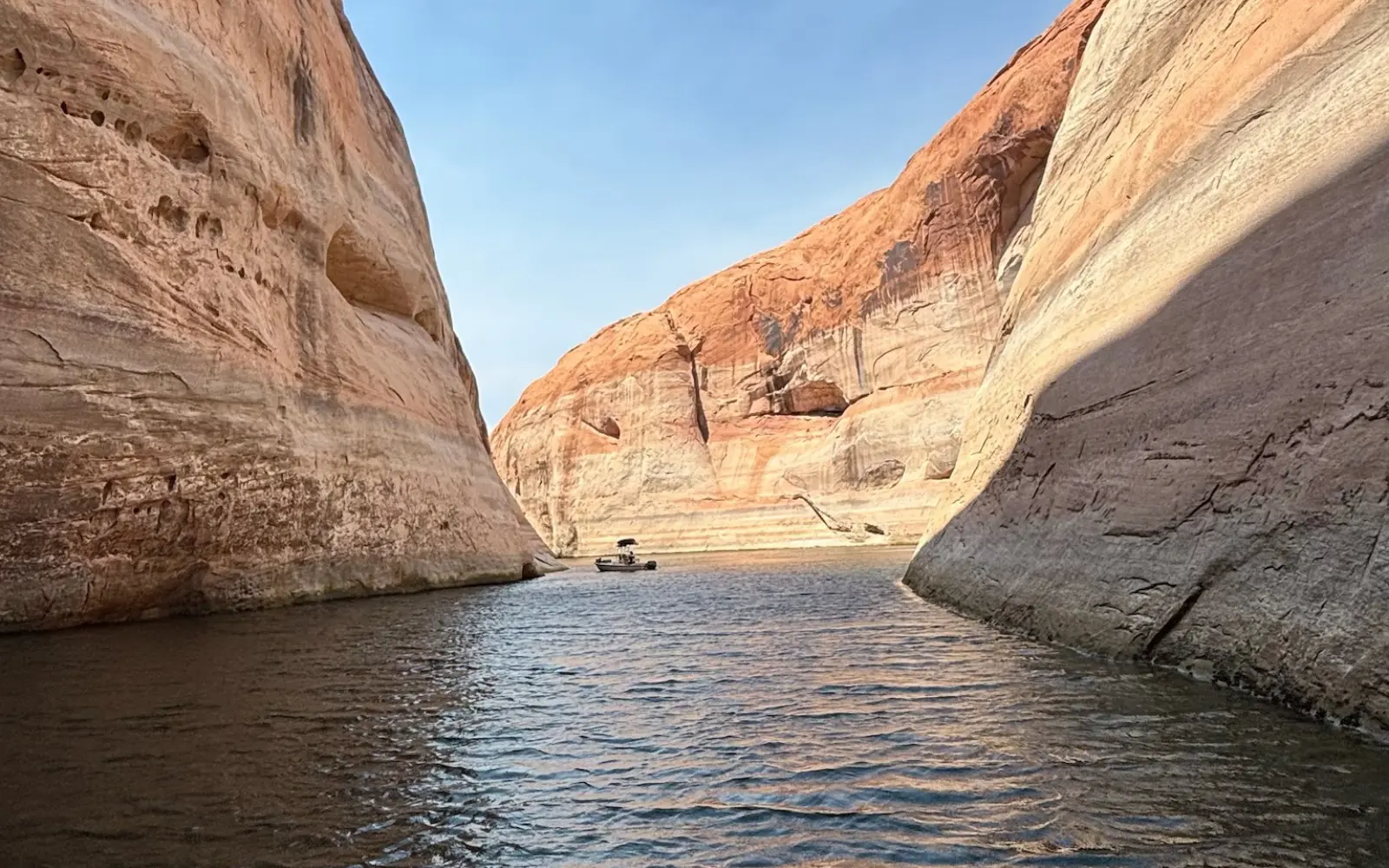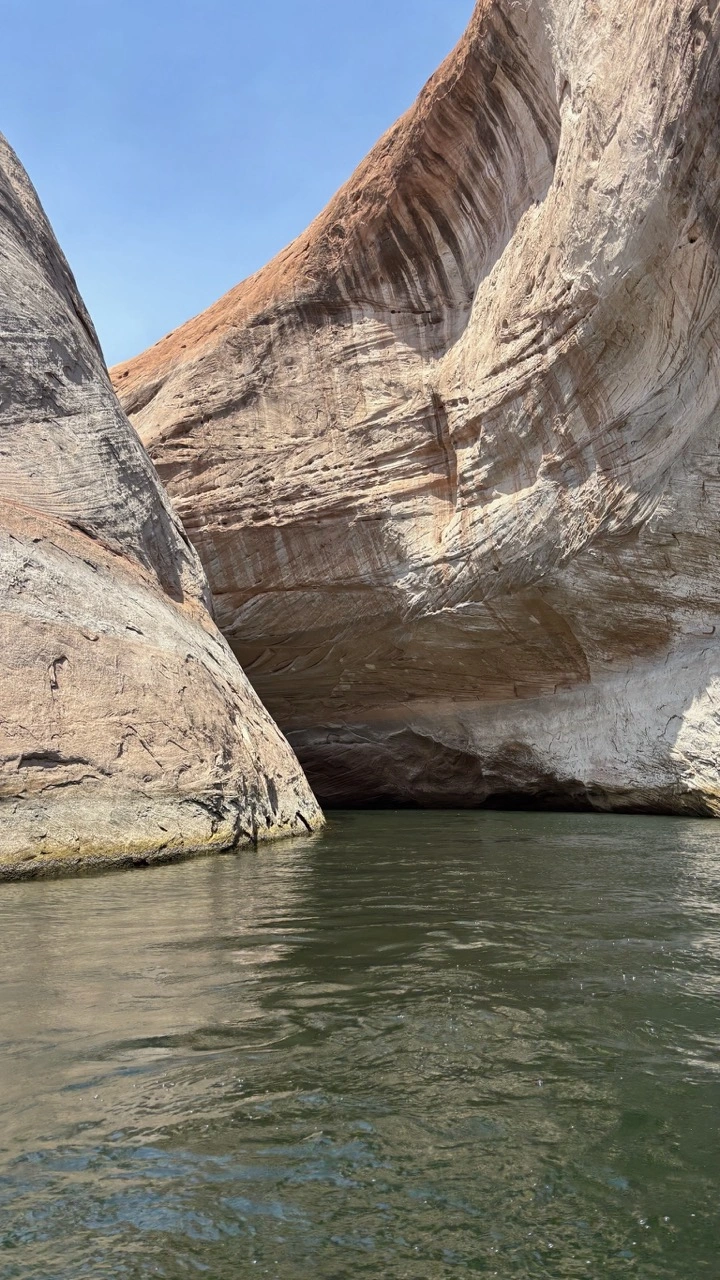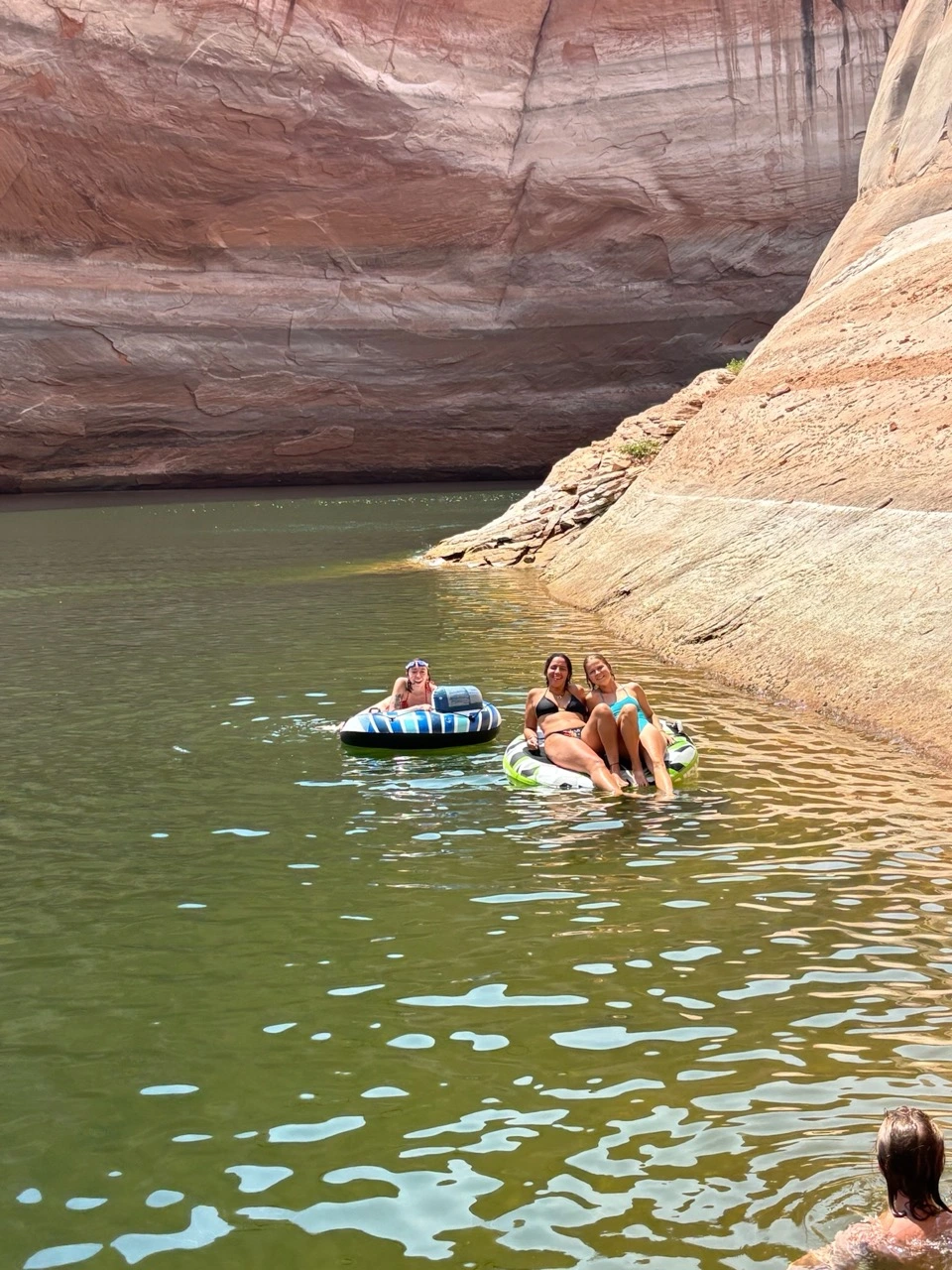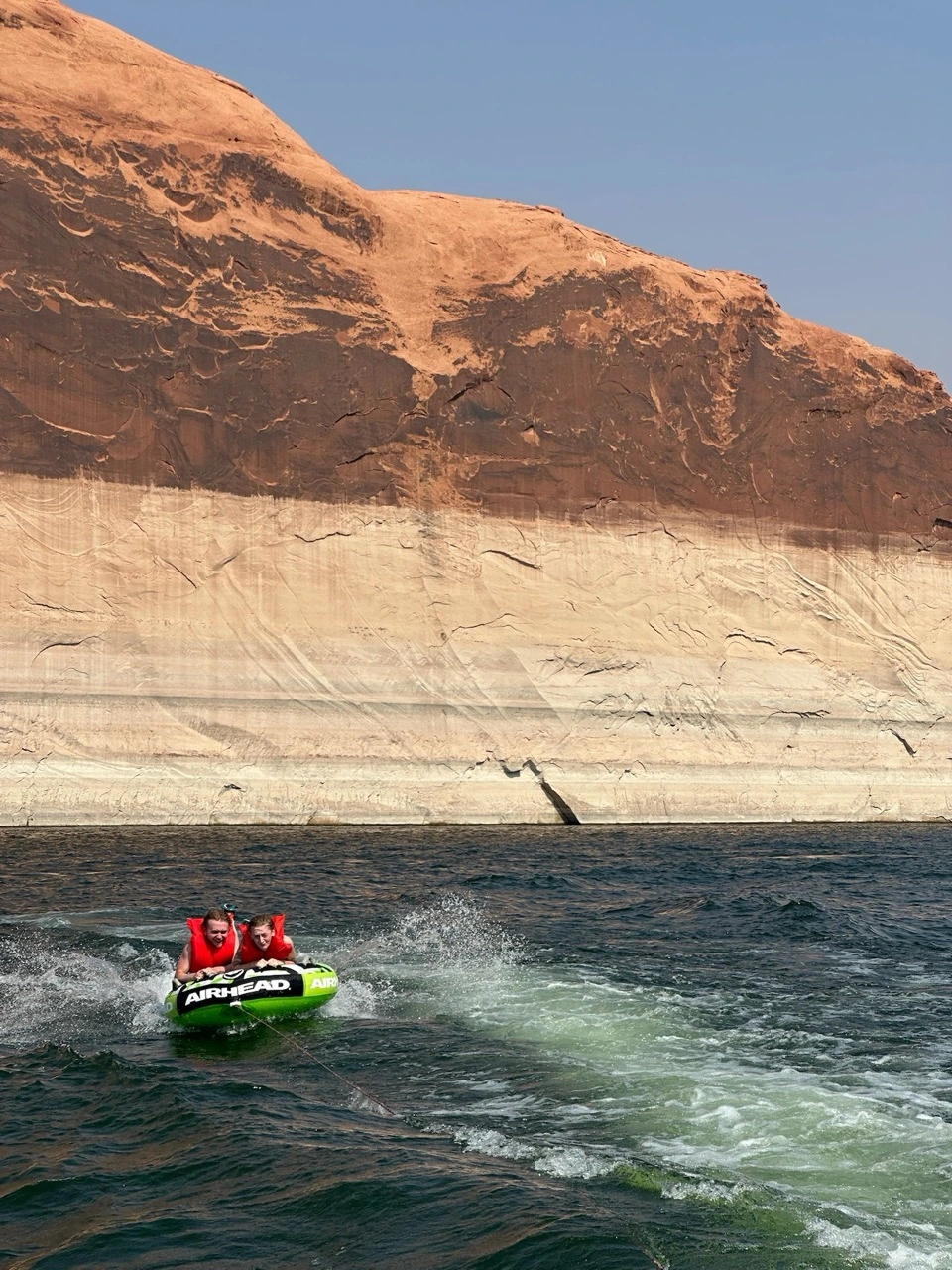Think Moab—red cliffs, stunning views—but instead of hiking in the heat, you’re floating through peaceful canyons on a pontoon. That’s Lake Powell.
I recently went camping there to celebrate my friend’s 30th birthday. We stayed on the Utah side and rented a pontoon for the day. We cruised through slot canyons and swam in hidden coves with almost no one else around. It felt like we were on another planet.
Side note: I’m Kelly—Jeff’s daughter and the voice behind most of Argo’s newsletters and blog articles. I usually write about boating from the sidelines, so getting out on the water myself (with Argo in hand!) was a fun full-circle moment.
The weekend was unforgettable, and the scenery so spectacular that I couldn’t not write about it. Here’s a few favorite spots, tips, and a deeper look at the lake below:
If You’re Launching from the Utah Side…
The refreshing water-filled lake might give a false sense of safety. Don’t forget that you’re in the middle of the hot dry desert. Gas, shade, sunscreen, food, and plenty of water—before and after your trip—are key to having a good time..
- Closest Grocery Stop: Don’t wait until you’re at thelake—the nearest grocery store is about 3.5 hours away. Best to stock up at home before beginning your drive. There is a small marina store in case of emergencies.
- Marina & Rentals: We rented a pontoon from Bullfrog Marina. It was $649 for a 23 foot pontoon day rental and they even gave us a tube to pull-behind the pontoon for free. Book early, especially for weekends or holidays.
- Accomodation: We camped along the banks of the shore about 20 minutes from the marina. There are several established campgrounds and primitive camping is allowed nearly everywhere a 4-wheel drive car can take you. For those looking for a more comfy accommodation option there is lodging at the marina (or you could rent a houseboat!).
- Gas for Getting There: The last gas station I saw was about an hour before Lake Powell in Hanksville. Google maps does show others but I did not see any.
- The Roads: There’s a paved road to the marina, but if you plan to camp expect some loose sand and 4-wheel drive conditions. My 2-wheel drive Toyota RAV4 made it fine but my friend’s Camry struggled.
- Cell service: Service goes in and out on the lake, depending on how deep in a canyon you are. Pre-downloaded charts would be helpful, but not required. You will lose service about an hour away when driving in, but it’ll be back once you arrive.
How I Used Argo on the Water
I didn’t use Argo to plan the trip—but once we were out on the water, it became a really helpful tool.
There were only a few points of interest marked in the area, so I added two more spots I thought future boaters would love and submitted them to be public. I’m proud to say you can now search for them on the map!
The first is a giant cove with a beach and some small cliffs for adventurous types to jump off of. The second is a neat cave that had a massive opening up top, known to locals as the toilet bowl. Supposedly, people have jumped off of it but it was a bit high for me and my friends. These were places I never would’ve seen on a paper map, but we had a friend who knew the area with us.
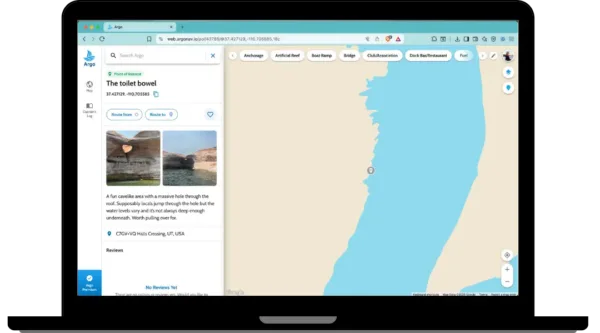
I’d love to see more boaters add their discoveries to the map. If you find a cove, beach, or swim spot you love, drop a pin and help the next person experience something magical too.
Beyond saving spots, Argo was super useful at the end of the day. We didn’t pull out the tube until the final hour so we wanted to use every last minute of our pontoon rental. I was able to check Argo to know exactly how long it would take to get back to the marina. That little ETA readout gave us the confidence to linger without stressing.
Quick Tip: Argo doesn’t show depth data on Lake Powell, but the autoroute feature was still handy for estimating time and fuel. Just be cautious—at one point it tried to route us over what used to be water but clearly wasn’t anymore. All I had to do was add a waypoint to direct the route back through the water so my ETA’s and such were accurate again. Safety-wise, the canyons here are so steep and deep that it’s usually easy to tell what’s safe.
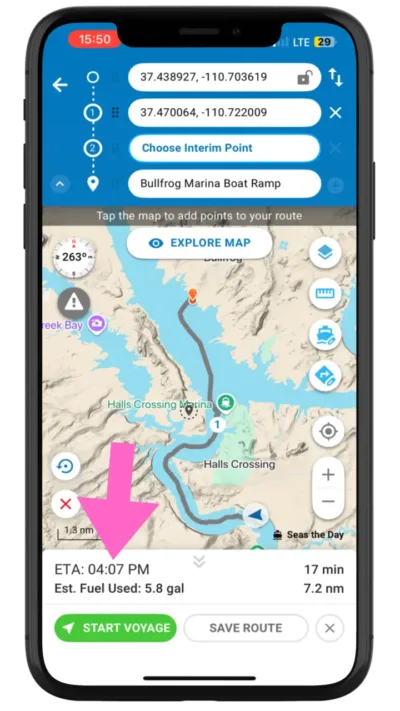
A Deeper Look: Lake Powell’s Origins & Future
What makes Lake Powell feel so otherworldly is the contrast. A giant lake in the middle of a red rock desert feels unexpected—because it is. Lake Powell is actually a man-made reservoir, created when the Glen Canyon Dam was built in the 1960s. That means this vast body of water didn’t exist just 60 years ago.
Today, Lake Powell sits at around 50% capacity after years of drought. Some conservationists want to “re-wild” Glen Canyon by gradually draining the lake. They propose moving the water storage to nearby Lake Mead, which is also low. This could help restore natural ecosystems and improve water efficiency downstream.
Before the lake existed, the canyons held natural arches, rare plants and animals, and ancient cliff dwellings — similar to what you see in Arches and Mesa Verde National Parks. These landscapes are hopefully still preserved underwater, waiting to be uncovered.
If you’re curious, you can learn more about the movement to re-wild Glen Canyon and the impact Lake Powell has on both the environment and water security in the West.
However, it’s not a black and white issue. Others point out how vital Lake Powell is for recreation, power, and water storage. I personally can attest to how fun it is to take a boat out on the reservoir.
There are no easy answers, but understanding this place’s past and future gave me a deeper appreciation for boating here. Whether it stays a reservoir or returns to canyon, it’s worth protecting.
Final Thoughts: Respect the Lake
If you head to Lake Powell, go prepared and go with care. It’s one of the most surreal and stunning places I’ve ever boated. Argo made it easy to explore, mark memorable spots, and stay on track when it mattered most. If you’ve been to Lake Powell, I’d love to hear your favorite spots—drop a pin in Argo or shoot us a message. We’re all figuring this out together.

